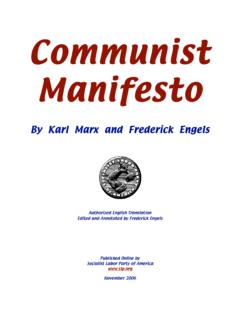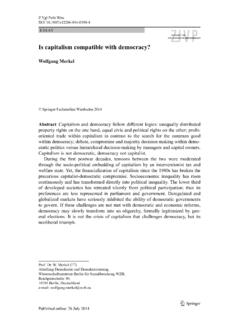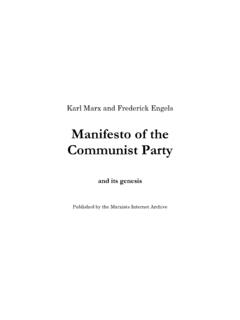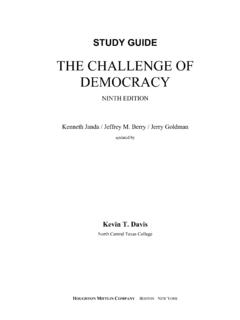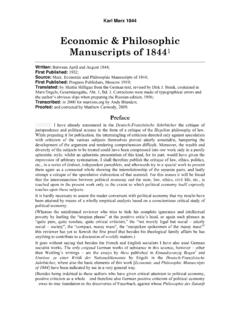Transcription of The Differences in Communism in Russia & China Handout
1 The Differences in Communism in Russia & China Handout The birth of Communism in Russia began in 1917 under the leadership of Vladimir Lenin. Three years later, a Soviet agent named Grigorii Voytinskii arrived in China and began to help build the Communist Party there. Although the same philosophy guiding the Russian revolution guided China , Differences of opinion existed from the beginning. These grew over time, eventually leading to a major political rift known as the Sino-Soviet split. Early Ideological Differences The early Communist Party in China adhered closely to Russian political philosophy. However, Mao Zedong, a founding member of the Chinese Communist Party, disagreed with the concept of a workers' (city industrial workers) revolution in China . Reasoning that the majority of the Chinese population were peasants (poor farmers of low social status), Mao refocused the goal of Chinese Communism toward the concept of a peasant revolution.
2 Despite this, the two nations still shared fairly similar values until the 1950s, when a major ideological rift developed. During this time, the Soviet Union advocated coexistence with capitalism. China , meanwhile, remained determined to pursue a policy of aggression, labeling the United States in particular as an imperialist enemy and declaring an intent to assist with revolutionary struggles of people oppressed by imperialism, an example would be helping North Korea during the Korean War. Policy Under Khrushchev After Joseph Stalin died in 1953, Nikita Khrushchev came to power in the Soviet Union. Khrushchev began to immediately modify government policy, attempting to guide the country away from the extreme oppression that had existed under Stalin. In 1956, Khrushchev made a speech denouncing the former dictator and began a campaign to remove the traces of Stalin's legacy from the country.
3 The Chinese government opposed this stance, spoke in favor of Stalin's aggressive foreign policy and Totalitarian leadership style and continued to enhance the cult of personality building around Chairman Mao depicting him as a visionary, political genius, guardian of his people and benevolent leader. A Widening Gap As China and the USSR began to split, the Soviet Union became less repressive. During the so-called Khrushchev Thaw from 1953 to 1964, the USSR saw a reduction in censorship. At the same time, the China restructured its government and eliminated much of its culture during two movements known as the Great Leap Forward and the Cultural Revolution. During the Great Leap Forward, a plan patterned after Stalin s 5 Year Plan, which attempted to shift the Soviet Union from a purely agrarian society to an industrial one that also caused millions to starve in a countrywide famine, took place from 1958 to 1961, the government took land from peasants, who were then organized into farming cooperatives, a policy that ultimately lead to 15 to 20 million people dying in a famine.
4 The Cultural Revolution was a state-sponsored eradication of traditional Chinese culture, ideas, customs and habits that took place from 1966 to 1976 and resulted in the destruction of temples and schools as well as the murder of over 3 million people who were deemed a threat to the revolution. Adaptation After Mao Zedong dies Deng Xiaoping becomes leader of China Deng saw how the Soviet Union was hurting economically and he wanted to make changes in China Deng institutes some free market ideas, people could keep what was over their quota and they could start their own side business He sends the colleges students to western universities to learn and bring back knowledge that had been lacking in Chinese Universities, but the college students bring back other things as well, like ideas about Democracy and freedom One of the largest Differences between Soviet and Chinese Communism is that Chinese Communism lasted but Soviet Communism did not.
5 After Mao's death, China restructured its government, providing its citizens with greater freedoms and changing its economic policy to favor a market economy open to foreign trade instead of one that was centrally managed. During the 1980s, the Soviet government remained unwilling to make reforms it viewed as capitalistic, and the resulting economic decline lead to the Soviet downfall. Since then, Russia has attempted to shift to a market-based economy with mixed results. At the same time, China shifted to a system known as market socialism, which differed from the USSR in its reliance on a free market. This system is still in place in China , which now has one of the world's strongest economies.
